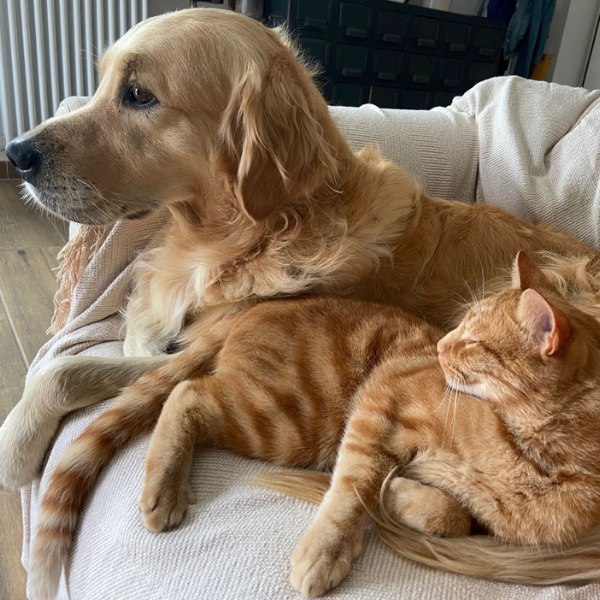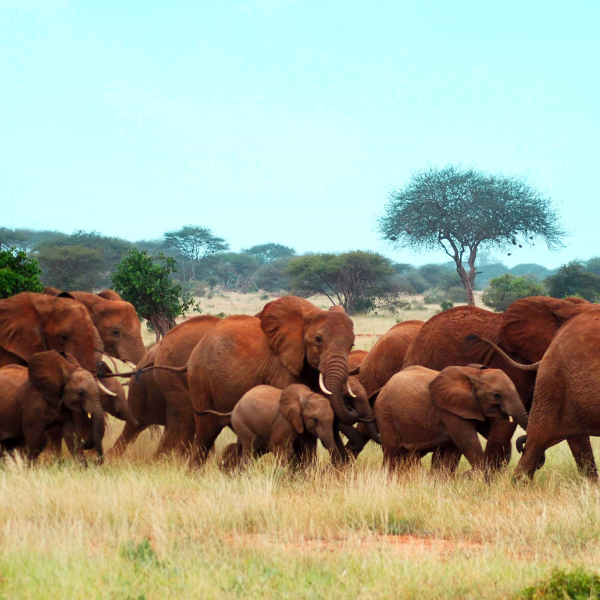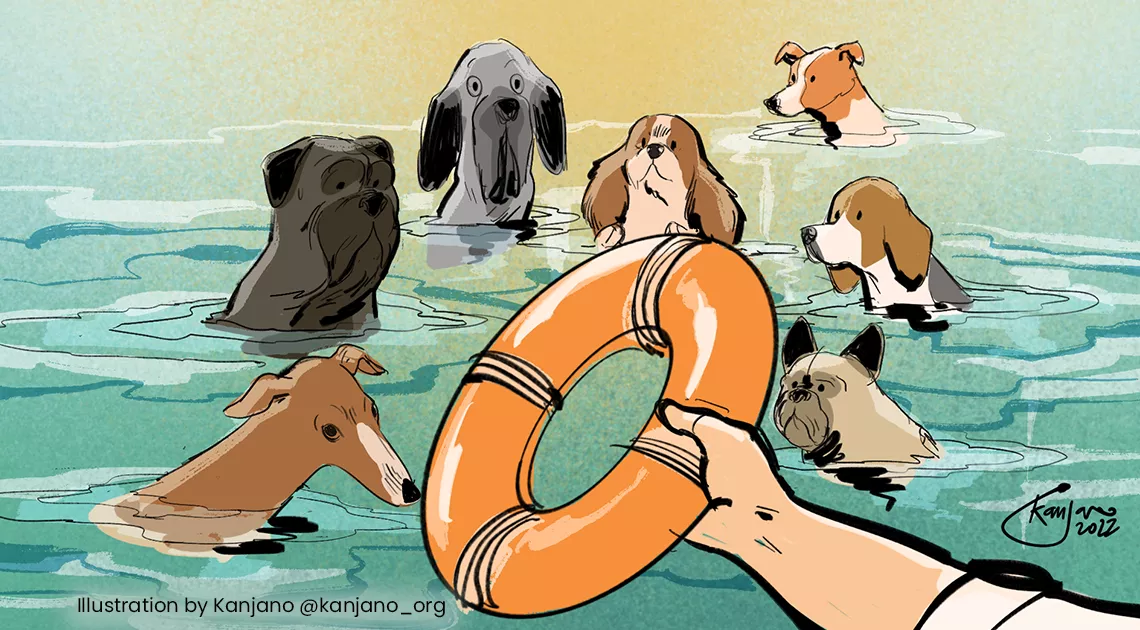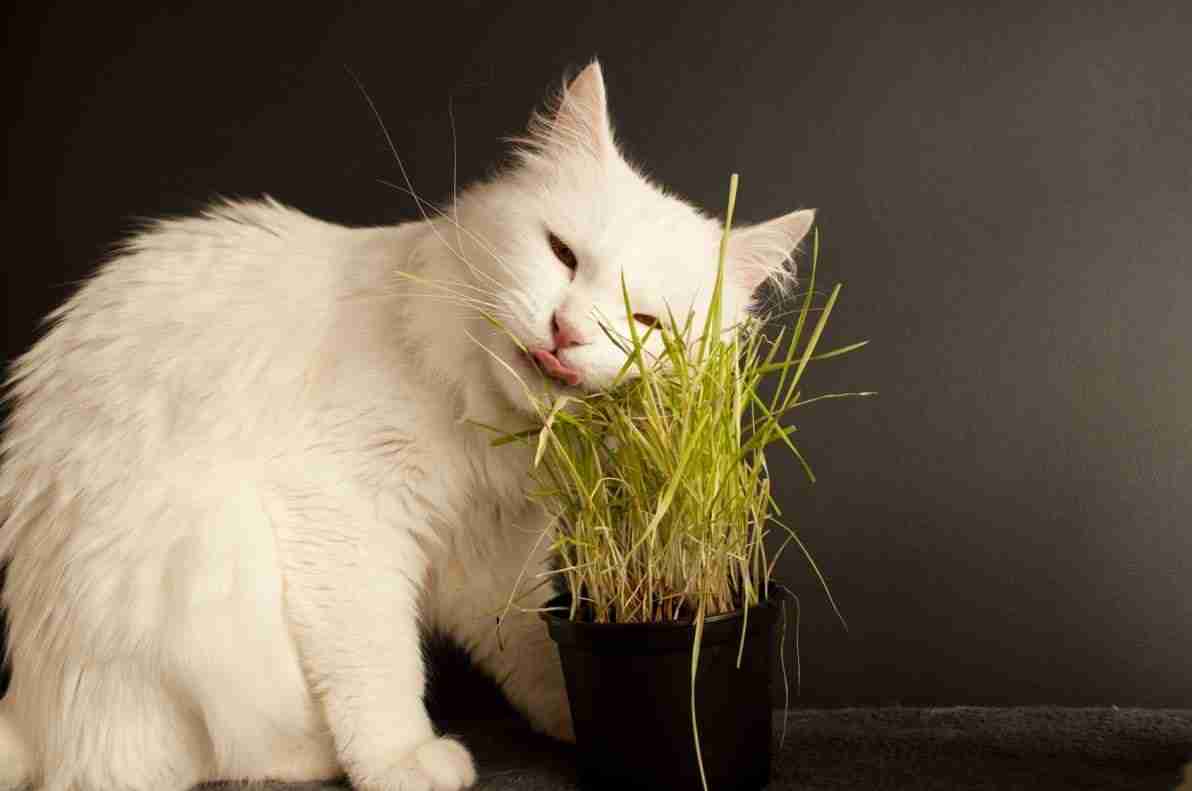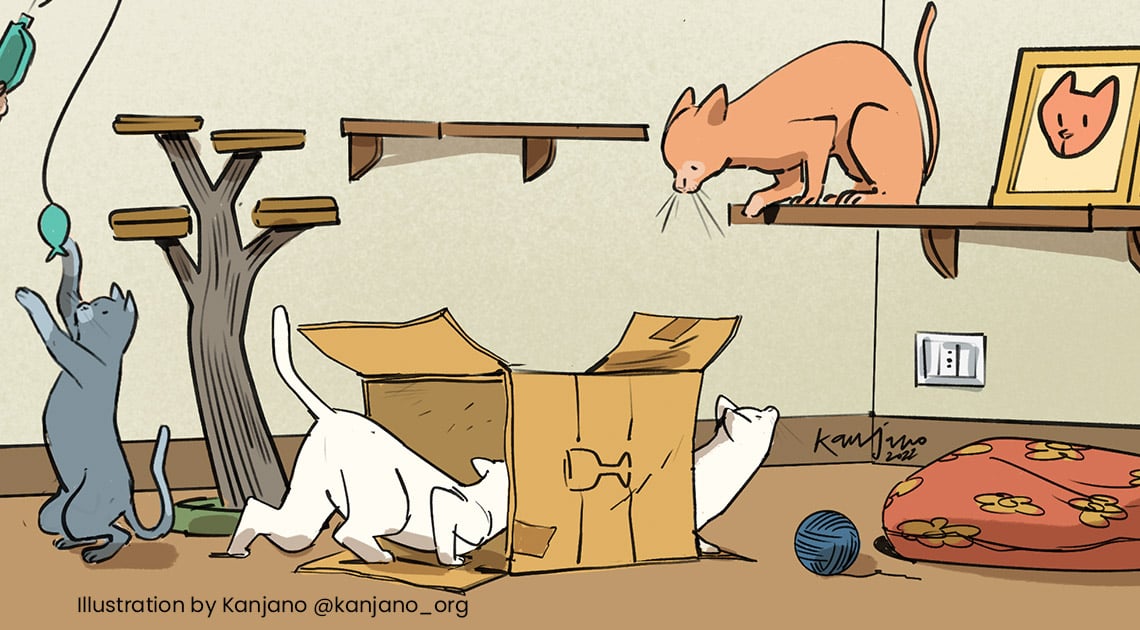PINE PROCESSIONARY CATERPILLARS AND DOGS (also cats). What the dangers are and how to deal with them.
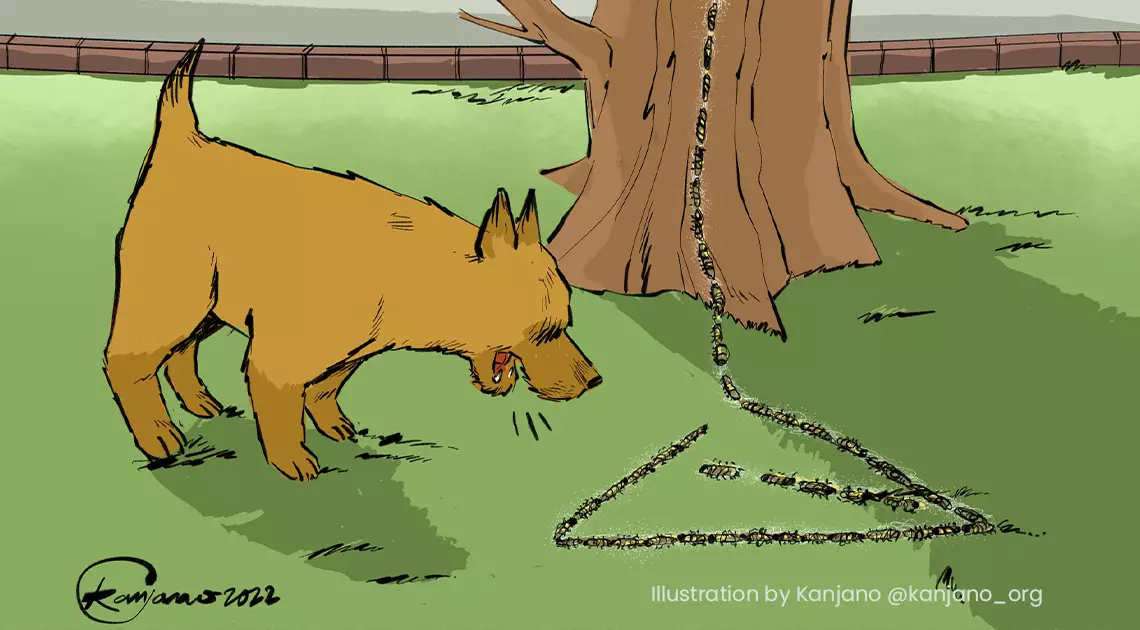
Practical advice from the clinic
- If I asked you to picture a butterfly, your mind would no doubt evoke graceful and multicolored insects dancing among the flowers of the fields in a blaze of spring and beauty. Unfortunately, however, If I mention the Pine Processionary moth, your creative imagination would have to surrender to the idea that far less pleasant looking butterflies exist, whose "offspring" can cause considerable damage to plants, humans and animals.
Not surprisingly, the Ministry of Agricultural Food and Forestry Policies established a decree dated 30th October 2007, which lays down measures to combat this insect.
Thaumetopoea pityocampa, known as the Pine Processionary moth, is an insect belonging to the Lepidopteran family. The adult is a rather plump butterfly, with two grey forewings, white hindwings with two small black dots in their lower margin.
The life cycle of a processionary moth is divided into four phases: egg, larva or caterpillar (which feed on leaves), chrysalis (phase of transformation from larva to adult) and butterfly (adult).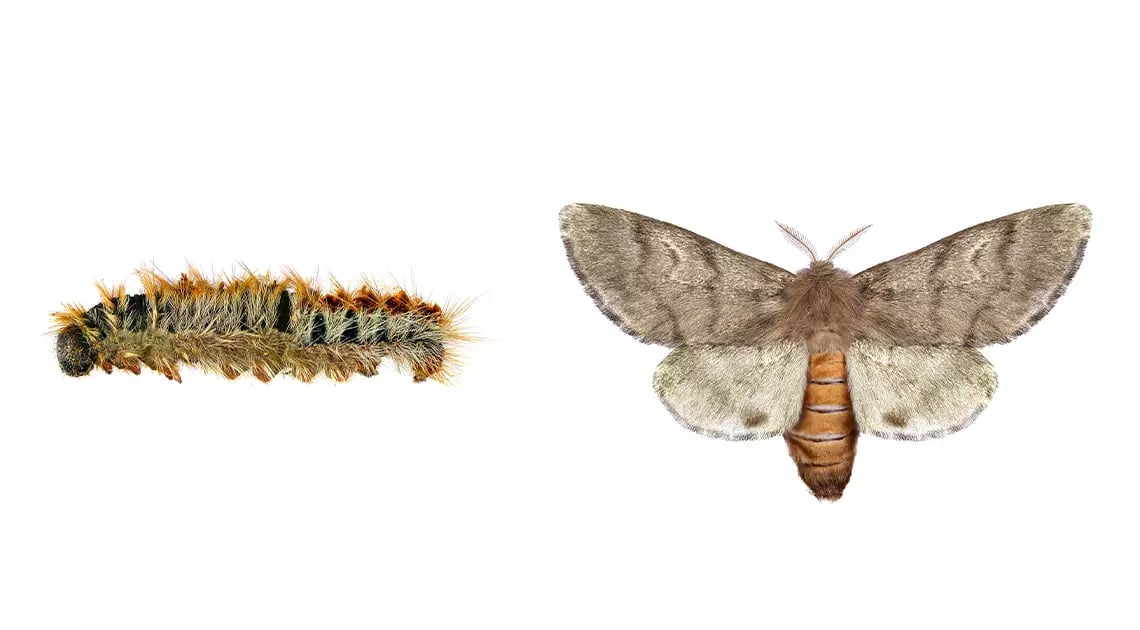
Between the end of June and the beginning of August, after the transformation of the larvae into chrysalises and subsequently into adult moths takes place inside cocoons in the soil, the latter emerge from the ground usually in the cool hours at night, and take flight. The females mate, lay their eggs on foliage (in pine trees) and then die; they live for only a few days.
The eggs are laid in large quantities and form a kind of coating around the pine needles. After a month or so, from about mid-August, the larvae hatch and build a temporary nest. Subsequently, they build their final winter nest generally in the highest parts of the pine tree on the ends of the sunniest branches to withstand the rigid winter climate. These larvae feed on the pine needles and, being extremely voracious and numerous, cause tree defoliation, which provokes a serious weakening of the tree, also exposing it to the attack of other parasites.
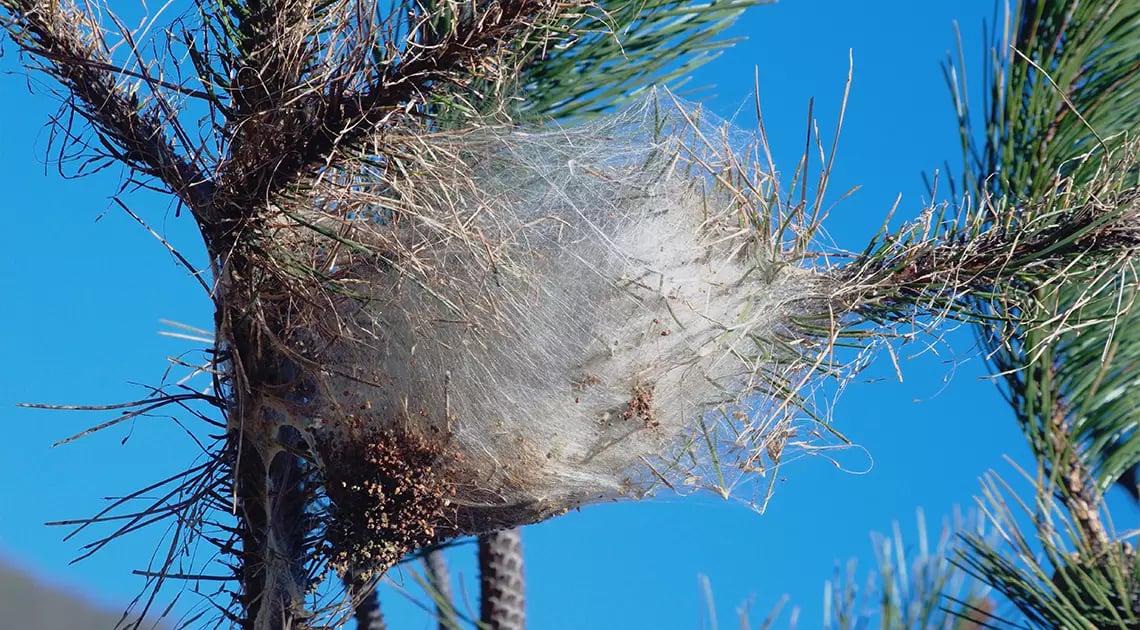
The problem for our animal friends however, comes when the mature larvae abandon the nests, usually between March and April (customers in the clinic usually compare the larvae to cotton candy you can buy from a country fair) and descend the tree trunks in single file, as if in a procession. When they arrive on the ground, they stop to create new cocoons. These 1-3 cm long caterpillars are slate grey with a yellowish band on their back comprising urticating hairs, which contain a protein substance capable of triggering slight to severe irritation to whatever animal or human they come into contact with, even as serious as an anaphylactic shock.
P
Unfortunately, dogs and cats can be visually attracted to the procession of the larvae in motion and can unfortunately stick their noses or mouths into it with sometimes really devastating consequences. Be careful, because the same could happen to children when playing in pine forests or in house gardens with parasitized trees!
WHAT IS THE HEALTH RISK OF THE PROCESSIONARY TO DOGS AND CATS?
Reactions can vary and are closely related to the part of the body that comes into contact with the urticating substance, as well as the size of the affected surface.
Contact with the skin is certainly painful, but the damage does not often cause concern. In these cases it is sufficient to wash the part abundantly with water in order to remove any of the urticating hairs that are stuck (be careful not to put your hands on the affected area or to spray too much water so as not to risk getting fragments of hairs into your eyes or onto other areas of the animal’s body or yours). The skin may show an area of erythematous redness that, as a rule, disappears after a few days. I do not recommend using a cream because our four-legged friend would instantly lick it off. If the area of skin erythema is large enough to require local pharmacological support (on the advice of the attending veterinarian and not of the web!), the dog should wear an Elizabethan collar.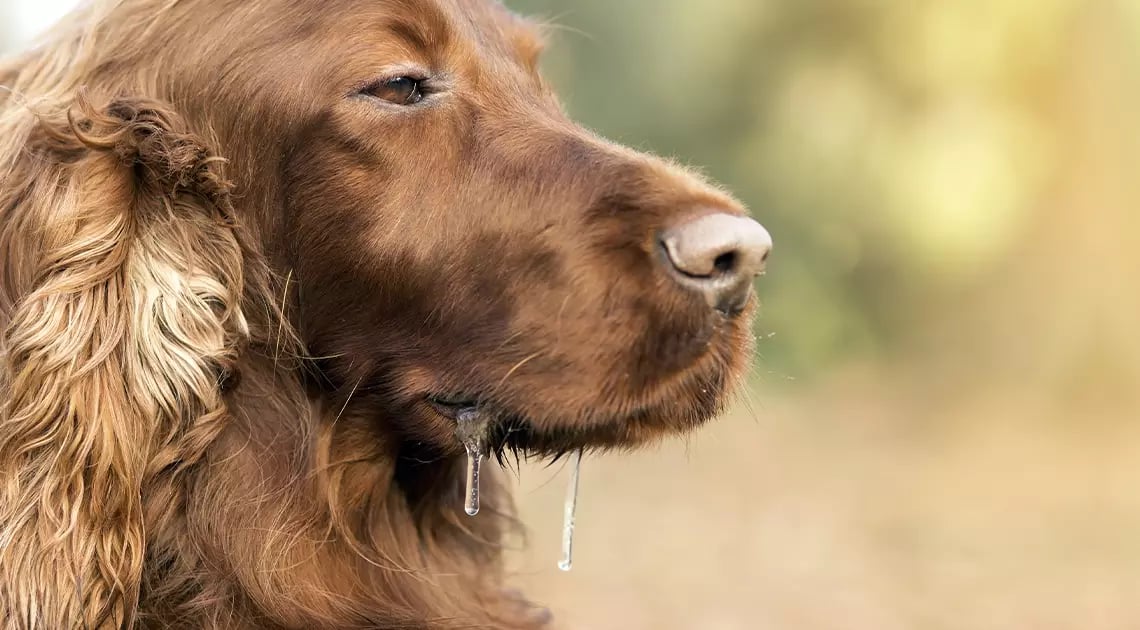
ADVICE:
Should you unfortunately find yourself in such a situation, I strongly recommend that you get to the nearest veterinary clinic as soon as possible since searching for DIY solutions on the internet or improvising with fancy solutions, will not only be misleading but would delay the implementation of procedures that could save the life of your furry friend, precious time that a veterinary doctor would use in an appropriate and timely way.
The only thing that you could try, if you have a bottle of water at hand or better a hose syphon if you are in the garden, is to wash the area, taking care to direct the jet from the back of the mouth to the front because, in reverse, you could push the urticating hairs down your dog's throat and worsen the situation. In the vast majority of cases, however, the animal will not allow you to perform any such manoeuver, due to the intense pain it will be suffering. Don’t waste time insisting!
At the veterinarian, however, sedation and possible anesthesia of the subject is possible if necessary to implement any care and rescue procedure.
WHAT ARE THE THINGS YOU CAN NEVERTHELESS DO?
As usual, since it is always better to prevent rather than treat, we can:
Avoid walking or stopping near plants or areas infested with processionaries (in the period from the end of February to April always look up to check for typical "cotton candy" looking nests and search the ground to identify any "processions").
When in doubt, keep your dog on its leash for safety, thus preventing it from sticking its nose in "procession" risk areas.
Pay attention to areas with higher grass or brushwood where hidden processionary caterpillars or nests may have accidentally fallen.
Avoid areas that have been treated with insecticides because, although larvae in nests will be dead, the urticating hairs can still cause damage, and may have dropped to the ground. It is better to avoid the area until the nests on the trees have been removed.
If you see any processionary or larvae nests, report the sighting to a competent municipal body (local police, municipal police, local health board) without improvising and risking your safety and the safety of others.
Dott.ssa Alessandra Di Marzio. Independent Veterinary Physician.


